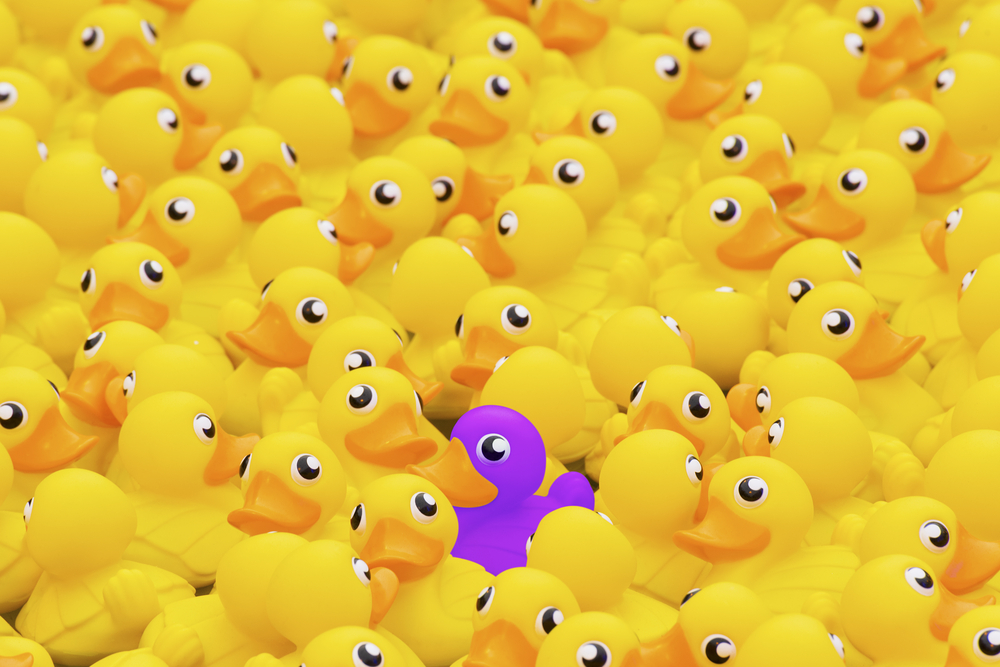In my storytelling workshops, I stress that to be effective with any content marketing strategy, you’ve got to develop a distinctive – as opposed to distinct – point of view for the story you’re telling or the value you’re delivering.
Distinct. Distinctive. The terms are sometimes used interchangeably. The difference I’m getting at is subtle. We typically describe a thing as “distinct from” – meaning separate from – other things. But we don’t say “distinctive from.” Something is either distinctive or it’s not. To be distinctive is to be in a class of your own among others, standing out as unique. A duck is a distinct kind of bird. A purple duck would be a distinctive duck.
You’re probably asking, “What’s the point, Robert?”
Well, this is.
I find most marketing and sales teams really avoid the distinctive point of view but are totally cool with being distinct. In other words – we most often differentiate on being a duck, but are afraid to actually figure out how we might be a purple duck.
Questions emerge: “What if we’re wrong?” or “What if people don’t like it?” or “What if a customer disagrees?”
My answer: “To be right for someone, you have to be willing to be wrong for someone else.”
I got into this discussion in a recent client meeting. We talked about the opportunities that arise when a company has a distinctive point of view. See, normally when we think of differentiating our content, we think, narrowly, of how we differ – how we’re distinct. If we sell law firm workflow software to lawyers, we might claim to offer the best legal thought leadership. That’s distinct. If we, rather, started offering up the best ways for lawyers to grow their business and evolve into being the best marketers they can be – well then that might be distinctive.
Being only distinct limits our ability to stand out, especially if we’re in an industry where not all of our competitors are wrong – and we, in fact, have much in common with them.
Look at the top five brands in the enterprise web content management software space. They are all mostly telling the same distinct story, namely, that delivering great customer experiences should be easy, personalized, and scalable. None of those stories is distinctive.
We don’t have to oppose our competitors to tell a distinctive story.
We can agree on a topic and share a familiar story – even as we create a distinctive point of view. Think about books or movies. You could argue that the world doesn’t need another boy-meets-girl-wins-girl-loses girl-wins-girl-back story. But when When Harry Met Sally, Say Anything, and The Princess Bride came out, people flocked to those distinctive versions of the same old story. Each movie was in a class of its own.
The discussion that inspired this post happened at a B2B manufacturing company selling common cleaners and adhesives. We were working on a new angle for their thought-leadership program. Every one of their competitors is targeting operational managers with large-scale needs for cleaners or adhesives with the same old story: We can help you be more efficient in your procurement of adhesives and cleaners.
At our meeting, we aligned on a possible distinctive point of view. What if they taught these operational managers to be change agents in their organization? What if we educated them on the next generation of procurement? What if we taught them how to be more strategic in their business.
I don’t know if that point of view will work. The client may not even go with it. One thing is for sure: It’s distinctive. It’s a purple duck in a room full of brown mallards. That’s the point. If you’re trying to tell a story that everyone will like or agree with, be ready for no one to care.
That’s the one way you don’t want to be distinctive.
It’s your story. Tell it well.





